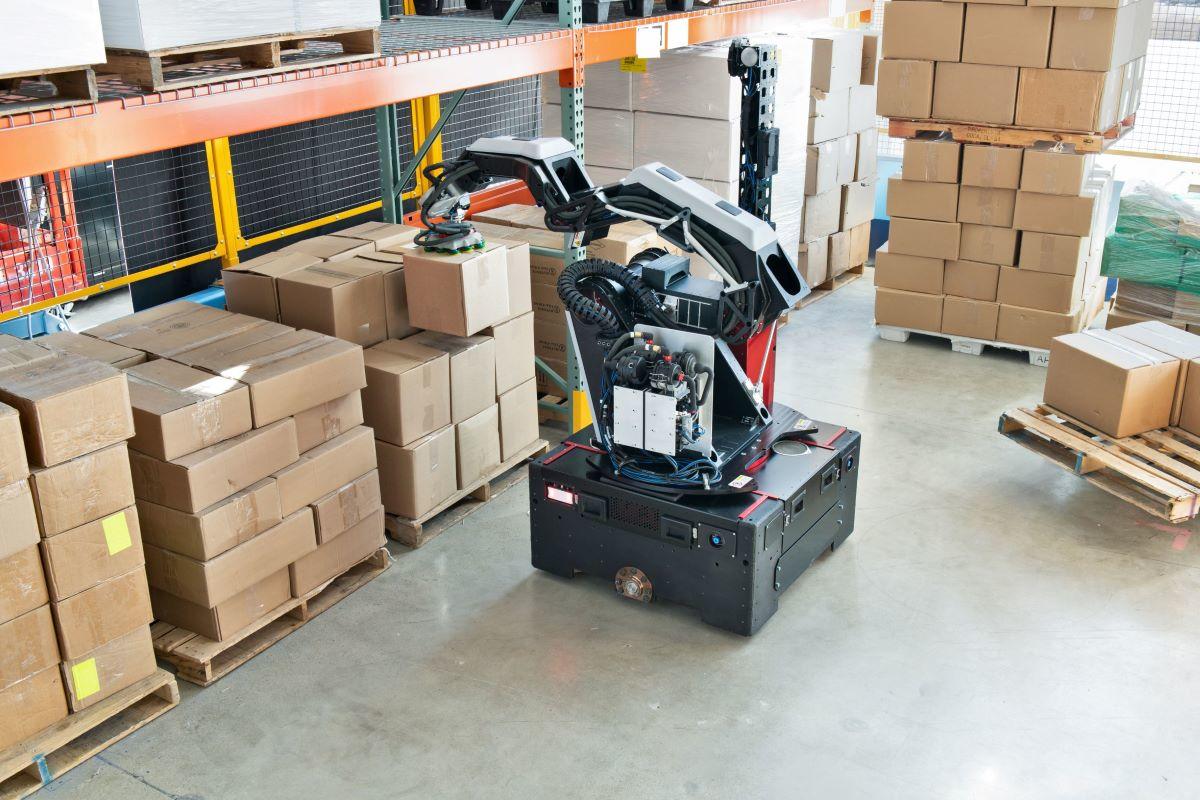
The new robot comes in the form of a mobile base equipped with a robotic arm and gripper.
Image: Boston DynamicsAfter having deployed the flagship robot dog Spot for a range of different applications, from factory floors to NASA’s Jet Propulsion Laboratory, robotics company Boston Dynamics has added a brand-new specimen to its line of automatons, this time designed to move boxes around warehouses.
Called Stretch, the new robot comes in the form of a mobile base equipped with a robotic arm and gripper, packed with smart sensors and controls that can identify and handle different boxes and shrink-wrapped cases. For now, Stretch’s main ability consists of identifying, gripping, and unloading boxes off trucks, but according to Boston Dynamics, the robot will later expand into order building.
The company is therefore making a debut in warehouse automation – understandably so, given the pace at which the field has accelerated over the course of the past year.
Recent research shows that there are currently 150,000 warehouses in the world, representing roughly 25 billion square-feet of space; but the boom that online sales have experienced as a result of the COVID-19 pandemic is expected to require an additional 28,500 buildings to be added in the next five years.
The e-commerce sector saw sales grow more than 30% in 2020, a much steeper growth than was seen in previous years, while also having to meet customers’ expectations of next-day delivery as a default option. Automation, and the efficiencies it can generate in the warehouse, is increasingly seen as a useful solution to cope with the explosion of demand.
“Warehouses are struggling to meet rapidly increasing demand as the world relies more on just-in-time delivery of goods,” said Robert Playter, CEO of Boston Dynamics. “Mobile robots enable the flexible movement of materials and improve working conditions for employees. Stretch combines Boston Dynamics’ advancements in mobility, perception and manipulation to tackle the most challenging, injury-prone case-handling tasks, and we’re excited to see it put to work.”
One of Stretch’s key selling points is the robot’s ability to move around the warehouse floor, which means that it can navigate loading docks, fit in smaller spaces and adapt to changing facility layouts. This, said Boston Dynamics, will increase productivity in comparison to fixed robotic arms that are seen in certain settings, which are harder to move around.
Once Stretch has made its way to the loading docks, the robot’s perception mast – which is fitted with computer vision technology – detects the boxes that it needs to take care of; a seven degrees-of-freedom arm will then reach throughout a truck or pallet, with at its end, a smart gripper that will stick onto the cases to start unloading.
Boston Dynamics is entering a space that is already buzzing with emerging technology. Fetch Robotics have recently launched a robot called PalletTransport1500, another autonomous and mobile machine that ferry cargo of more than 2,500 pounds around warehouses.
E-tailers themselves have been fitting their buildings with sophisticated robotics for years. As early as 2014, Amazon was already showing off the company’s new robot-powered fulfillment center, complete with mobile Kiva robots shuttling merchandise throughout the warehouse, and gigantic Robo-Stow robotic arms moving large quantities of inventory when customer orders come in.
British retailer Ocado has also been investing heavily in robots, which take the shape of dishwasher-sized units that coordinate in swarm-like behavior across huge warehouses to pack customer orders as efficiently as possible.
Stretch, for its part, is for now ready to be deployed as a pilot for truck unloading tasks for interested customers, and Boston Dynamics expects that the robot will be commercially available from 2022.




















